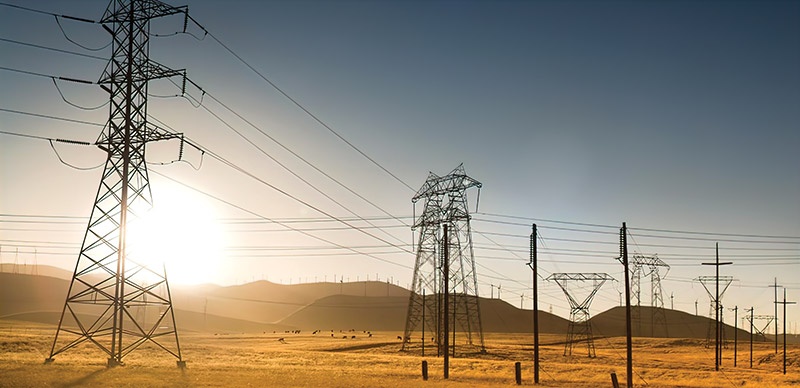GE: the shortest route towards sustainability
How do you think the world can best accelerate energy transition across the board?
 |
| Narendra Asnani, general manager of Contractual Services Asia at US-backed GE Gas Power |
Climate change is a global priority which needs urgent action over the next decade. The global energy industry is trying to solve the energy trilemma of balancing sustainability, reliability, and affordability. This is because power generation makes up 41 per cent of emissions globally.
However, there is not enough zero-carbon energy to meet the demand today. Energy demand will continue to rise, especially if we are to administer improvements in the lives of the one billion people who currently have no reliable access to power.
It is essential for the energy industry to reduce total emissions while increasing generation efficiency. In 2019, carbon emissions in Asia-Pacific reached about 16.5 billion metric tonnes, half of which came from electricity and heat producers. This prompted Asian nations to create stringent decarbonisation strategies.
We believe that the simultaneous accelerated and strategic deployment of renewable energy and gas power can yield substantial progress in combatting climate change in the near-term, while opening a path to a lower-carbon emitting world in the time beyond. Currently, neither gas nor renewables are sufficiently effective alone at the pace and scale needed. In fact, gas plays a critical role in achieving ambitious emission reduction goals. Gas is a force multiplier for expanding renewables by providing constant baseload energy.
Addressing climate change requires global action and national commitments, as well as consistent policy frameworks. We need to do more to move the needle and make the next 10 years a decade of action to de-carbonise power.
What challenges are facing the countries that are new to the energy transition, like Vietnam?
Electricity demand in Vietnam is forecast to rise 8.8 per cent per annum in 2021-2025, and 6.7 per cent in the next five years. Meanwhile, the country targets to reduce its greenhouse gas emissions by 9 per cent by 2030 and reduce carbon emissions by 83.9 million tons, instead of the earlier 62.7 million tons through indigenous efforts. In addition, at the COP26 climate summit, Vietnam committed to achieving net zero by 2050.
To achieve these targets, the country is now moving from traditional energy sources to renewables and lower-emission sources including wind, solar and gas power. Specifically, wind power will be developed substantially, from the capacity of about 600MW in 2020 to 11-12GW in 2025 and over 17.3GW in 2030, including 1GW of offshore wind power. Meanwhile, gas power generation will be increased from 7GW in 2020 to 37GW in 2030, with gas-to-power sources accounting for 9.49 per cent.
Creating the right energy mix is essential and with the right strategy and the right technology, countries like Vietnam can chart a path to a greener economy with sustainable, reliable, and affordable power.
However, with the region’s energy demand set to increase by at least 3 per cent a year until 2030, it has been challenging for markets to provide ongoing sustainable energy ventures with affordable pricing structures. This has slowed down the scaling of cleaner alternatives, while the need for reliable baseload power keeps growing to prevent intermittency issues.
Going forward, the energy transition and diversifying the region’s energy mix rides, to a great extent, on our ability to find adequate solutions around the energy trilemma.
 |
| GE: the shortest route towards sustainability, illustration photo |
Energy transition will require the adoption of modern technologies and new breakthroughs. As a global leader, how does GE help Vietnam realise its energy transition ambitions?
GE has over 100 years of expertise in leading innovation and we have set all of our capabilities behind addressing energy transition issues. According to the latest McCoy Power Report, GE has more experience running gas turbines on hydrogen than any other original equipment manufacturers. In total, GE has more than 100 gas turbines with eight million operating hours, supporting power generation with hydrogen and associated fuels around the world.
The Sultan Ibrahim Combined-Cycle Track 4A Power Plant in Malaysia began operations last year with GE’s 9HA.02 gas turbines. The project was the first globally to use these turbines in commercial operation. The plant will have the capability to burn hydrogen levels up to 50 per cent in the future.
Another project is Tallawarra B, Australia’s first dual-fuel-capable natural gas/hydrogen power plant owned by Energy Australia. The project is powered by 9F.05 turbines and operates as an open-cycle peaker at 316 MW.
With our substantial international experiences, GE can support Vietnam in switching from coal to gas, charting the fastest, most practical and most affordable path to emission reduction. GE has recently joined the expansion of Nhon Trach power plant as an equipment supplier.
Accordingly, 9HA gas turbines will be provided for the first liquefied natural gas (LNG) power plant in Vietnam. This will be GE’s first H-Class gas turbine order in Vietnam. Once in commercial operation in 2025, Nhon Trach 3 and 4 is expected to deliver over 1.6GW of electricity and it will be the country’s first power plant fuelled by LNG.
This first-of-its-kind project will open a new chapter for gas power generation in Vietnam. We are proud to begin deploying the first project of this type in the country to support national energy goals and facilitate more sustainable economic growth.
What policies do you think are necessary for Vietnam to advance energy transition and drive decarbonisation across the power sector?
There are many pathways to a cleaner energy future, and the mix of fuels and technologies needed to achieve net-zero carbon goals vary from country to country.
A multi-stakeholder approach involving industry associations, governments, and the academia is essential to drive concrete actions. GE Gas Power is committed to be working with local partners such as utilities and independent power producers and support them with cleaner energy solutions and our newest, most advanced gas turbine fleet.
At the same time, we are continuously looking for ways to collaborate with government agencies in this country, such as the Electricity and Renewable Energy Authority and Electricity of Vietnam as well as the Ministry of Industry and Trade, to integrate and scale new technologies so that we can better serve customers in the region.
We believe that a combination of gas and renewables is key to addressing climate change and will enable the fastest practical and affordable path to decarbonisation. In terms of policy reforms, we would be happy to see the government measure and incentivise reductions in carbon intensity in the power sector. Transparency and predictability are also crucial, allowing lifecycle economics to drive investment decisions factoring in a cost of carbon in some forms.
Another solution is to establish market structures that value energy, flexibility, and dependable capacity separately to encourage the optimum mix of technologies in an affordable and practical way.
Vietnam should also encourage the free flow of goods and ideas, consistent with the principles of the World Trade Organization. Efforts should also be made to reward research and development, innovation, and private risk taking. On top of that, the country should set realistic timelines for its emissions reduction efforts.
What the stars mean:
★ Poor ★ ★ Promising ★★★ Good ★★★★ Very good ★★★★★ Exceptional
Related Contents
Latest News
More News
- Addressing Vietnam's energy challenges with aeroderivative gas turbines (February 28, 2023 | 09:33)
- How to sprint ahead in 2023’s worldwide energy priorities (February 08, 2023 | 13:55)
- Boosting Vietnam's grid stability through gas turbine technology (November 22, 2022 | 20:02)
- Healthcare trio collaborates to provide thousands of free breast scans (October 27, 2022 | 17:19)
- GE Healthcare's vision for AI-backed radiology (September 29, 2022 | 11:53)
- GE brand trio to shape the future of key industries (July 19, 2022 | 15:35)
- GE unveiling brand names and defining future (July 19, 2022 | 15:16)
- Be proactive in an uncertain world (May 20, 2022 | 11:40)
- GE secures first 9HA combined cycle power plant order in Vietnam (May 16, 2022 | 17:06)
- 5 things that make GE a happy place to work (April 29, 2022 | 07:58)

 Tag:
Tag:





















 Mobile Version
Mobile Version